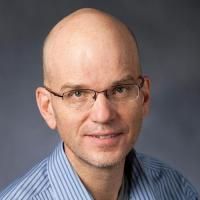Millimeter-wave compressive holography.
Date
2010-07-01
Journal Title
Journal ISSN
Volume Title
Repository Usage Stats
views
downloads
Attention Stats
Abstract
We describe an active millimeter-wave holographic imaging system that uses compressive measurements for three-dimensional (3D) tomographic object estimation. Our system records a two-dimensional (2D) digitized Gabor hologram by translating a single pixel incoherent receiver. Two approaches for compressive measurement are undertaken: nonlinear inversion of a 2D Gabor hologram for 3D object estimation and nonlinear inversion of a randomly subsampled Gabor hologram for 3D object estimation. The object estimation algorithm minimizes a convex quadratic problem using total variation (TV) regularization for 3D object estimation. We compare object reconstructions using linear backpropagation and TV minimization, and we present simulated and experimental reconstructions from both compressive measurement strategies. In contrast with backpropagation, which estimates the 3D electromagnetic field, TV minimization estimates the 3D object that produces the field. Despite undersampling, range resolution is consistent with the extent of the 3D object band volume.
Type
Department
Description
Provenance
Subjects
Citation
Permalink
Collections
Scholars@Duke

David J. Brady
David Brady leads the Duke Information Spaces Project (DISP). Historically, DISP has focused on computational imaging systems, with particular emphasis on smart cameras for security, consumer, transportation and broadcast applications. Currently DISP focuses primarily on the use of artificial intelligence in camera arrays for interactive broadcasting.
Unless otherwise indicated, scholarly articles published by Duke faculty members are made available here with a CC-BY-NC (Creative Commons Attribution Non-Commercial) license, as enabled by the Duke Open Access Policy. If you wish to use the materials in ways not already permitted under CC-BY-NC, please consult the copyright owner. Other materials are made available here through the author’s grant of a non-exclusive license to make their work openly accessible.
